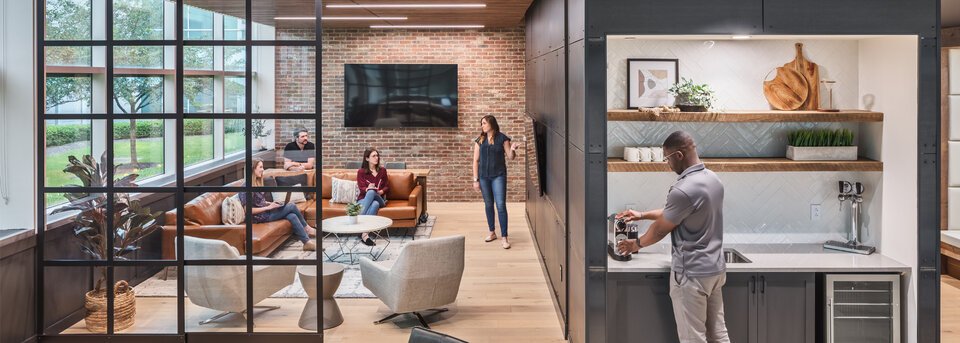Cost
$10 –
AIA, AIAS, AFC, ASHRE, 2030 District, CNU Midwest, Green Umbrella, NOMA, ULI Cincinnati, and USGBC Members
$25 –
Non-Members
Free –
Full-time Students
Location
Union Hall
Program Overview
Register by noon on April 14.
What is this thing that we call architecture? Historically, architects have focused on the building as an object. Think the Parthenon, the Pantheon, Chartres Cathedral, or the Tempietto in Rome. One may recall their history of architecture courses where students memorized buildings, their architects, the style, and the year that it was completed. Seldom did professors and students discuss the relationship of the building to its context or the social implications of the building.
However, there are examples of buildings as a symbol of societal change including architect Peter Behrens’s AEG Turbine Factory, finished in 1909 in Berlin, Germany. The truth is that all buildings do and have served a greater purpose than the iconic representation of style. Buildings make our society more humane and shape the human experience. Architects, in turn, shape our society through the creative processes they lead.
Leaders of today’s multidisciplinary architecture firms focus beyond the formal characteristics of buildings. They design the physical manifestation of organizational strategies and brands. This includes logos, graphics, and the full range of three-dimensional physical reality, including the adaptation of existing buildings, additions, interiors, and sites. The highest concern for these leaders is how they shape the physical world we occupy. Ultimately, the goal is to create positive experiences for occupants which connect them to a richer human experience.
Design is the connective tissue between individuals. The architect’s ethical obligation is to look at how they can help people relate to each other and encourage them to explore their relationships. The impact of the pandemic and rapidly evolving technologies present a challenge for architects as they become more intentional about the cues they offer to those who occupy or wish to occupy the built environment. If architecture does not support the need for connectivity and accessibility, architects will certainly not be successful.
Learning Objectives
Attendees will be introduced to the historic role of the architect as it relates to project planning and design and consider how this role has evolved in response to societal needs.
Attendees will consider the current role of the architect and the way architects are shaping practice to design and elevate the health, safety, and welfare of occupants.
Participants will explore how interdisciplinary design teams elevate occupant security, improve a sense of wellbeing and belonging, and heighten awareness of organizational strategies, values, and brand.
Case studies will be reviewed to explore how the architect considers visual connections and flexibility in the design of educational and corporate workplace settings. The safety of occupants will be considered as part of these case studies.
Attendees will be introduced to the integration of technology systems and the impact that these systems have on the design of workplaces and higher education environments.
Keynote Speaker
Timothy Hawk, FAIA: Principal WSA Studio
Timothy Hawk is the President of WSA Studio in Columbus, Ohio. The firm’s work features urban interventions, significant interior environments, and iconic built form. He has also been a tireless advocate for the renovation and adaptation of historic structures throughout Ohio.
Hawk has been an active AIA leader on the local and national level. He was President of AIA Columbus (2009-2010), the Chair of the AIA National Advisory Group on Interior Architecture (2006-2009), and the AIA Columbus Honor Awards Committee Chair (2002-2005). As a community leader, Hawk has served as the President of the OSU Knowlton School of Architecture Alumni Society (2010-2011), the founding member of the Columbus Center for Architecture and Foundation Board Member (2010-2011), and as a member of the Communications Committee for the Mid-Ohio Regional Planning Commission’s Insight 2050 Task Force (2015-2016). He is currently serving as Treasurer on the national AIA board.


